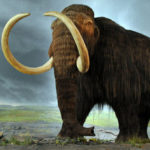 Weird Stuff
Weird Stuff  Weird Stuff
Weird Stuff  Our World
Our World 10 Ways Your Christmas Tree Is More Lit Than You Think
 Movies and TV
Movies and TV The 10 Coolest Stars to Set Sail on The Love Boat
 History
History 10 Things You Didn’t Know About the American National Anthem
 Technology
Technology Top 10 Everyday Tech Buzzwords That Hide a Darker Past
 Humans
Humans 10 Everyday Human Behaviors That Are Actually Survival Instincts
 Animals
Animals 10 Animals That Humiliated and Harmed Historical Leaders
 History
History 10 Most Influential Protests in Modern History
 Creepy
Creepy 10 More Representations of Death from Myth, Legend, and Folktale
 Technology
Technology 10 Scientific Breakthroughs of 2025 That’ll Change Everything
 Weird Stuff
Weird Stuff Ten Bizarre Facts About The Doge Meme
 Our World
Our World 10 Ways Your Christmas Tree Is More Lit Than You Think
 Movies and TV
Movies and TV The 10 Coolest Stars to Set Sail on The Love Boat
Who's Behind Listverse?

Jamie Frater
Head Editor
Jamie founded Listverse due to an insatiable desire to share fascinating, obscure, and bizarre facts. He has been a guest speaker on numerous national radio and television stations and is a five time published author.
More About Us History
History 10 Things You Didn’t Know About the American National Anthem
 Technology
Technology Top 10 Everyday Tech Buzzwords That Hide a Darker Past
 Humans
Humans 10 Everyday Human Behaviors That Are Actually Survival Instincts
 Animals
Animals 10 Animals That Humiliated and Harmed Historical Leaders
 History
History 10 Most Influential Protests in Modern History
 Creepy
Creepy 10 More Representations of Death from Myth, Legend, and Folktale
 Technology
Technology 10 Scientific Breakthroughs of 2025 That’ll Change Everything
10 Bizarre Research Projects from the 2023 Ig Nobel Prizes
Everyone knows about the Nobel Prizes, which are awarded to the people whose achievements have conferred the greatest benefit to humankind in the previous year. You may not, however, be familiar with the Nobel Prize’s less prestigious—but far more entertaining—cousin, the Ig Nobel Prize.
The Ig Nobel Prize celebrates “achievements that first make people laugh, then think.” Previous research topics have included whether people make better or worse decisions when they need to urinate, the nutritional value of human flesh, and whether cats can be classified as a liquid.
The Ig Nobel Prize’s 33rd ceremony was held virtually on September 14th. Each winner received ten trillion (Zimbabwean) dollars and a PDF file that could be printed out and assembled to form a cola box.
Here are their achievements, ranked in order of oddness!
Related: 10 Hilariously Weird Ig Nobel Prize Wins
10 The Strange, Strange, Strange, Strange Sensation of Semantic Satiation
Have you ever read or heard a word so many times that it seems like nonsense? Then you’ve experienced semantic satiation, and this next piece of research is for you.
The literature prize went to Chris Moulin, Akira O’Connor, and colleagues for their study “The the the the induction of jamais vu in the laboratory: word alienation and semantic satiation.” Naturally, the majority of their acceptance speech consisted of repetitions of the word “the.”
The scientists described semantic satiation as a form of “jamais vu.” Jamais vu is the reverse of déjà vu, occurring when something we know to be familiar seems strangely unfamiliar. About two-thirds of research participants who were asked to repeatedly copy words reported feeling peculiar. It took approximately thirty repetitions, or one minute, for the odd feeling to arise.[1]
9 What’s Up?
You’re walking down a busy street. A person in front of you looks up—do you pay attention? Maybe not. But what if everyone on the street looks up?
American psychologists Stanley Milgram, Leonard Bickman, and Lawrence Berkowitz won the psychology prize by working out how crowd size affects the behavior of passersby. When one person on the street looked up, only 4% of passersby followed their lead. When a crowd of 15 people looked up, 40% of passersby did so.
By the way, if you think you’ve heard the name Stanley Milgram before, you’re probably right. He’s responsible for the controversial Milgram experiment.[2]
8 Bored of Education
Not everything can be as exciting as the studies on this list. The education prize went to a group of scientists, including Christian Chan, Katy Y.Y. Tam, and Wijnand A.P. Van Tilburg, for their research on boredom in high school classes and undergraduate lectures.
In one study, the team discovered that expecting boredom was a self-fulfilling prophecy. Students who were led to anticipate that a lecture would be dull subsequently felt more bored by it. Another study revealed that students who thought their teacher was bored were more likely to experience boredom themselves. Interestingly, it was perceived boredom that affected student motivation, not actual boredom. Students usually failed to guess how bored a teacher really was.[3]
7 Counting Cadavers’ Nose Hairs
The medicine prize went to an international group of scientists who explored whether people’s left and right nostrils contained an equal number of hairs—using cadavers.
Our nostril hairs aren’t just there for decoration. They keep us healthy by preventing large particles from entering the nose. People with alopecia (the absence of hair from where it usually grows) often lose nostril hairs, increasing the risk of allergies and infection.
The researchers individually removed and counted the nostril hairs of 20 cadavers. Hair counts were similar in the right (112 hairs) and left (120) nostrils. Most hairs were found toward the front of the nose, supporting the idea that nostril hairs act as a protective barrier.[4]
6 sdrawkcaB kaepS naC ohW elpoeP fO seitivitcA latneM ehT
French learners are likely to panic when faced with “Verlan,” a slang language in which a word’s syllables are sounded in reverse. The phenomenon is popular with younger people and often features in French rap. Reversed speech also features in other languages. Some citizens of the town of La Laguna speak “Verres,” a backward form of Spanish.
María José Torres-Prioris, Adolfo M. García, and colleagues won the communications prize for their research on the mental activities of people who are experts at speaking backward. Backward speakers displayed behavioral advantages for reversing words and sentences compared to other people. They also possessed increased grey matter volume and enhanced connectivity between certain regions of the brain responsible for speech and language.[5]
5 Why Scientists Like to Lick Rocks
Did you know that the tongue is one of a geologist’s most important tools? Polish geologist Jan Zalasiewicz won the chemistry and geology prize for his article “Eating Fossils,” which explains why licking rocks is a legitimate analytical technique.
“200 years ago, geologists were licking rocks to find out what they were, with no machines, no microscopes, no chemistry,” Zalasiewicz explained at the ceremony. “They did geology, at least in part, by taste.”
One of science’s most iconic rock lickers was Giovanni Arduino (1714–1795), who developed the first classification of geological time. Arduino’s notes describe observations made using all senses. Fossil shells in a mudrock are described as leaving “a flavor equally bitter and ruinous,” while springs emerging from layers of marcasite and coal are said to “have an acid spicy flavor.”
Rock licking isn’t just a thing of the past, either. Wetting the surface of a rock allows fossil and mineral textures to stand out more clearly. “I’m a field geologist; I’ve licked a million rocks,” said Zalasiewicz.[6]
4 Zapping Your Tongue Makes Food Tastier
If you’re looking for a new way to flavor your food and drinks, try electricity.
Japanese scientists Hiromi Nakamura and Homei Miyashita won the nutrition prize for demonstrating how electrified chopsticks and drinking straws can alter the taste of foods and drinks.
Electrified straws and eating utensils can make food seem saltier. Since electricity has no nutritional value, Nakamura and Miyashita’s research offers us the chance to eat healthy, low-sodium food that still tastes delicious.
At the ceremony, the researchers showed off an electrified fork and announced their plans to make the technology available to the public in the near future.[7]
3 How Anchovy Sex Affects the Motion of the Ocean
Ever wondered how the sexual activity of anchovies affects ocean water mixing? Me neither, but it’s a more important question than you think.
Biomixing describes water mixing caused by the activity of small organisms like fish. The paddling of these organisms could drive cold, deep water upward, affecting the climate and the distribution of nutrients to marine life. However, biomixing is a controversial topic. Some scientists think fish are too small for biomixing to be an important large-scale influence on the oceans.
Beatriz Mouriño-Carballido and colleagues, winners of this year’s physics prize, showed that turbulent ocean mixing was significantly elevated by the swimming activity of anchovies gathering regularly over the spawning season. They even described the turbulence generated by crowds of spawning anchovies as “comparable to storms.”[8]
2 The Toilet That Knows a Bit Too Much
Want to fill your home with all the best tech? Here’s an upgrade you might not have considered yet—a smart toilet.
The Stanford Toilet, invented by public health prize winner Seung-min Park, uses a urinalysis dipstick test strip, a computer vision system for defecation analysis, a telecommunications link to monitor and analyze excretions, and perhaps most offputtingly, an anal-print sensor paired with an identification camera. Apparently, it’s not just our fingerprints that are unique.
Information gathered by the Stanford Toilet could lead to early detection of diseases such as bladder cancer, colon cancer, and infectious diseases like COVID-19.
“Don’t waste your waste,” Park advised.[9]
1 Re-Animating Dead Spiders as Gripping Tools
The mechanical engineering prize went to a team including Te Faye Yap and Daniel Preston, pioneers of “necrobotics”—a practice that’s even wilder than it sounds.
Look at a dead spider, and you’ll notice that its legs have curled up. Humans have antagonistic muscle pairs, like the biceps and triceps, which allow us to flex and extend our limbs. By contrast, spiders only possess muscles that flex their legs and rely on hydraulic pressure for extension.
The researchers tapped into dead spiders’ hydraulic systems with a needle. By changing the hydraulic pressure, the spiders’ legs could be extended and flexed, much like a claw machine.
Why re-animate dead spiders? The researchers suggested that the spiders could be used as zombie spies, going into natural environments to discreetly collect small biological samples. “I think they’re small enough that other animals probably won’t mind them in the wild,” Yap said.[10]








